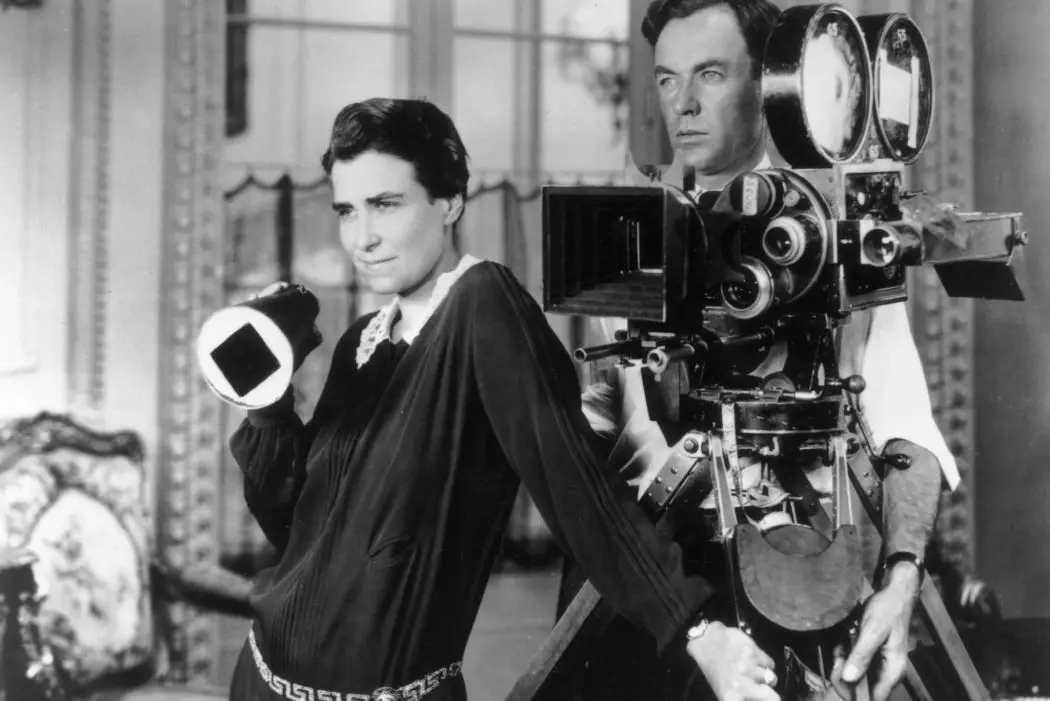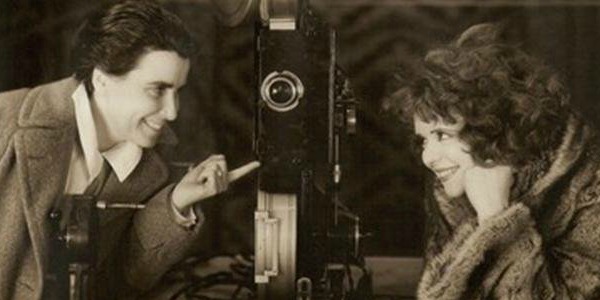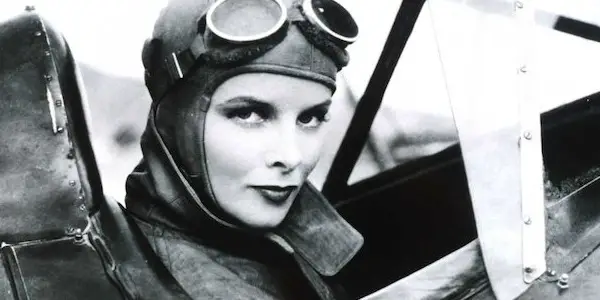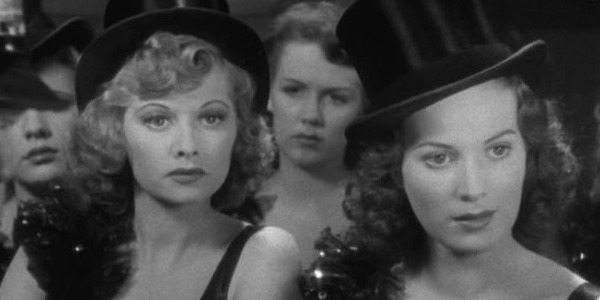Beginner’s Guide: Dorothy Arzner, Director

Angela Trott is a PhD Film researcher from the UK…
If you are a film fan with a penchant for Classical Hollywood movies, the chances are that you have heard of Frank Capra, Howard Hawks and George Cukor, who all worked prolifically during the 1930s and 1940s. However, mention the name Dorothy Arzner and even the most apparently diehard movie buffs can often respond with blank looks.
While her body of work can be criminally difficult to get hold of nowadays, Arzner remains the most prolific female feature film director to date with twenty feature films and box office hits to her name. This beginner’s guide seeks to provide a short insight into some of Arzner’s key works and hopefully encourage you to go out and discover one of Hollywood’s forgotten female filmmakers.
Early Career and Hollywood’s Golden Age
As research such as that conducted by The Women Film Pioneers Project has noted, it is inaccurate to state that there were no women working in early cinema. The early 1920s, in particular, saw women performing a variety of roles behind the camera and it wasn’t until the next decade and the increasing dominance of sound cinema, or ‘talkies’, that women were edged out of high profile production roles and the proliferation of a Hollywood boy’s club really took hold.
Arzner is unique in that she not only survived but thrived during this transition. Her early career seemingly prepared her well for this, as she has publicly discussed the many roles in film she undertook before sitting in the director’s chair for the first time, from typing scripts to editing several films at Paramount before demanding a role as director, or else she would leave.
Paramount gave her a directing job on Fashions for Women (1927) which was a commercial success and resulted in her making several further silent feature films for the studio.

Arzner is recognised as being the only woman to continue working as a director within the Hollywood studio system after the transition to sound cinema and even made Paramount’s first feature length ‘talkie’, The Wild Party (1929) starring silent movie superstar, Clara Bow. Bow stars as a college party girl, Stella Ames, who falls for her university professor, suggesting the rebellious nature of the early pre-code cinema that Arzner was able to direct.
The film is also a notable piece of filmmaking history in that it was on this set that Arzner invented what has since become known as the boom microphone when she improvised by attaching a microphone to a fishing rod in order to capture Bow’s voice while allowing her greater freedom of movement.
One of Arzner’s greatest early box office successes continued this rebellious streak, arriving in cinema’s just before the censorship of Hollywood cinema became more rigorously enforced and bearing a title that some newspapers refused to publish. Merrily We Go to Hell (1932) featured a naïve young woman married to an alcoholic journalist and tackled controversial issues for the time, such as adultery and a marriage in crisis.
Due to the censorship of the Classical Hollywood period, the film was unavailable for decades and its star Sylvia Sidney did not become a household name in the way that many of Arzner’s other female lead casting choices did, such as Lucille Ball, Katharine Hepburn and Rosalind Russell, but her performance is nonetheless striking and darkly beautiful.

Continuing her trend for working with emerging stars in roles which would accelerate their Hollywood trajectory, Arzner’s directorial project the following year featured Katharine Hepburn in what was only her second film, Christopher Strong (1933), starring as a rebellious and strong-willed pilot Cynthia Darrington.
Cynthia finds herself torn between her love of flying and her passionate feelings for a married man; the eponymous Christopher Strong. The title is in fact misleading, as the film really focuses on Cynthia and her romantic awakening, something extremely rare for the time. As we may have now come to expect from Arzner and her work in Pre-Code cinema, the film deals with such daring storylines as female sexuality, adultery, unplanned pregnancy, and even suicide.
Career Highs and Final Films
After an extremely prolific start to the 1930s, in which Arzner was making at least one film a year, sometimes two, her output slowed slightly at the end of the decade and the start of the forties but also featured some of the most important films of her career. Despite her collaboration with Joan Crawford, The Bride Wore Red (1937), finding only limited success at the box office, many consider it to be one of Crawford’s greats.
It also remains significant in terms of its daring depiction of cross-class relationships, with Crawford’s character of Anni, a club singer, falling in love with an upper-class man, Rudi (Robert Young) in a cruel and cynical ploy by Count Armalia (George Zucco) to prove that ‘peasants’ are not so different from aristocrats.
It is 1940’s Dance, Girl, Dance that remains the jewel in the crown of Arzner’s career, and with good reason. Dance, Girl, Dance is a female buddy movie featuring two dancers, Judy O’Brien (Maureen O’Hara) and Bubbles (Lucille Ball). Judy is an aspiring ballerina who finds herself part of a struggling New York dance troupe alongside the aptly named Bubbles, who is considered the bold and sexy frontwoman of the group.
Although the narrative does hinge on a romance plot involving both women falling for the same man, in the style of most of Arzner’s work this is subverted by the rebellious and independent nature of the female characters and the real plot of interest here is their relationship with each other. This is heightened by complex and confident performances from both O’Hara and Ball.

One aspect of Arzner’s work that adds to the sense of subversion of the Classical Hollywood conventions that she was both working within and resisting, is a frequent rejection or critique of the male gaze. This is seen at its most overt in Dance, Girl, Dance which by the nature of its plot involves the women performing in revealing outfits for a clamoring audience on frequent occasions.
One of the standout moments of the film is when Judy has been attempting to perform a graceful ballet routine in front of a jeering audience at Bubbles’s burlesque show and reaches her breaking point, turning the tables on them and switching from meek to assertive. She strides in along in front of the orchestra pit, positioning herself as close to the now wary audience as possible, before accusing them:
“What’s it for? So you can go home when the show’s over and strut before your wives and sweethearts and play at being the stronger sex for a minute? I’m sure they see through you just like we do.”
There is a pause before many audience members break into spontaneous applause. This scene neatly encapsulates the independent and subversive spirit of Arzner’s work in a time when women were gradually being edged out of the Hollywood studio system.
After the wonderful achievement that was Dance, Girl, Dance, Arzner only made one more feature film. The little known First Comes Courage (1943) told the story of Norwegian resistance forces during World War Two and had to be completed by Charles Vidor when Arzner left the production due to pneumonia with a few weeks of filming remaining. After her illness, Arzner never returned to directing a Hollywood feature film again.
Legacy
Her exit from Hollywood after First Comes Courage did not mark the end of Arzner’s work behind the camera. She made commercials for Pepsi throughout the 1950s at the request of her now close friend Joan Crawford and taught at UCLA film school in the late fifties and early sixties, counting Francis Ford Coppola among her students. But it is her legacy as a filmmaker who challenged the patriarchal conventions of Classical Hollywood that mean she deserves to be remembered as the accomplished filmmaker that she indeed was.
It was only with the advent of feminist film theory in the 1970s that film scholars began to revisit Arzner’s body of work and understand its significance, examining her films in relation to notions of female authorship in a time when it was only the men of the Classical Hollywood era that most writers were deeming worthy of admission into the film studies canon. But for those outside of academia and film scholarship, there are still many pleasures to be found in Arzner’s work if you are willing to seek them out.
Narratives of female friendship, women resisting the prescribed roles that society has deemed suitable for them, and an independent and daring spirit that is well worth preserving in our film history.
Had you heard of Dorothy Arzner before now? If not, will you be seeking out one of her films to watch?
Does content like this matter to you?
Become a Member and support film journalism. Unlock access to all of Film Inquiry`s great articles. Join a community of like-minded readers who are passionate about cinema - get access to our private members Network, give back to independent filmmakers, and more.
Angela Trott is a PhD Film researcher from the UK who divides her time between film watching, writing, teaching, and tea drinking in equal measure.













